 By Bob Currie, Vessel Examiner
By Bob Currie, Vessel Examiner
U. S. Coast Guard Auxiliary Station Galveston Flotilla.
When Columbus sailed the ocean blue in fourteen hundred and ninety two, he was delayed waiting for favorable winds. A favorable wind to a sailor is almost any wind; Columbus was delayed because he had no wind at all. Once he got going, he sailed to the outer islands of the Bahamas and all over Cuba. After a year or so, he headed back for Spain. If the prevailing winds were east to west, then how the heck did old Columbus get back home? Why, he sailed against the wind.
Non sailors might wonder how that might even be possible, so I figured this might be a good time to explain to fellow power boaters how sailboats can pretty much go wherever they want to go, using the wind to move them in any direction they choose. Once this knowledge is gained, then powerboaters will have a better understanding of why sailboats have the right of way over powerboats, and we can all operate in a safer manner out on the water.
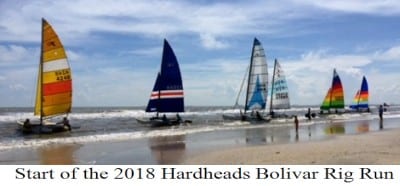
The Station Galveston Flotilla of the US Coast Guard Auxiliary operates out of the USCG Station Galveston base on Galveston Island. They provide assistance to the Coast Guard by providing maritime observation patrols in Galveston Bay; by providing recreational boating vessel safety checks; and by working alongside Coast Guard members in maritime accident investigation, small boat training, watch standing, and property administration.
In a Nutshell
The direction in which a sailboat sails depends on the force of the wind and on the resistance of the water. For certain orientations of the boat and its sails with respect to the wind, the combined effect of the wind and the resistance of the water is a net force that propels the boat diagonally into the wind. The force that the wind exerts on the sail has two components. The drag component pushes the sail in the direction of the wind. That force most people understand intuitively. The lift component pushes the sail perpendicular to the wind. It is the lift component that allows a sailboat the sail against the wind. That force takes a little explaining.
Lift Force
We all see the effects of wind drag, often daily. The wind blows leaves or objects on the ground. That is the drag component of the wind. But besides pushing, winds exert another type of force on objects. The following simple experiment demonstrates lift, the other type of wind force. Hold a piece of paper below your lips and blow. The air that comes from your mouth flows over the paper and the paper moves upwards into the flowing stream of air. In this case, the flowing air sucks the paper upward. This kind of suction force is called lift.
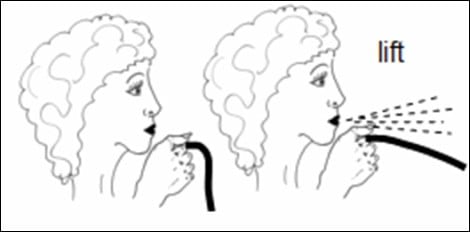
If you now understand the concept of lift as it relates to a piece of paper, the following diagram shows how the lift force acts upon the front of a sail.
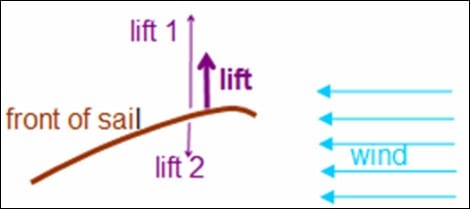
Wind exerts both drag forces and lift forces on objects The total wind force on the object is the sum of the drag and the lift forces. When lift force is present, the direction in which the wind is blowing is different from the direction of the total wind force. When the lift force is relatively small compared to the drag, the total wind force is close to the wind’s direction. When the lift force is relatively large compared to the drag, the total force is almost perpendicular to the wind.
Drag Force
The wind force that acts on the boat can blow in any direction,, but the boat can move only in the direction of the keel. The keel adds resistance, also known as drag, and the direction of that water drag in combination with the lift and drag components of the wind determine the actual direction in which the boat will be propelled.
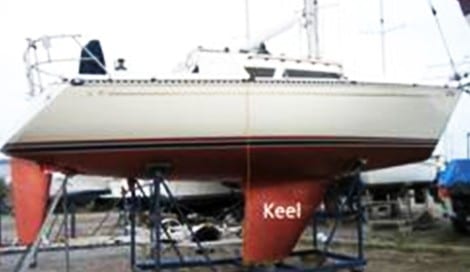
Heading Force
The active force on the boat is the wind force. Only part of the wind force propels the boat in the direction of the keel. This part of the wind force in the direction of the keel is called the heading force. The heading force is the force that actually propels the boat. The boat moves in the direction of the heading force. As you can see from the diagram, drag subtracts from the heading force. Key to moving in the direction of the wind is to have a lift force greater than the drag force. This requires the sailor to take a heading that increases lift while minimizing the drag component. The lift force may be fine tuned by repositioning the sail, while the drag force may be minimized by adjusting the angle of the keel in relation to the direction of the wind, which is done by turning the boat with the rudder.
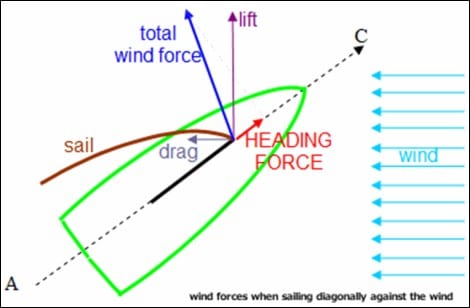
Sailing Against the Wind
A sailboat cannot sail straight into the wind. The wind drag force will push it downwind. In order to get from point A to a point B that is directly upwind, the boat must zigzag. The boat sails from point A diagonally into the wind to a point C. At C it turns and sails diagonally into the wind to point B. The boat may zigzag several times on its way from point A to point B. In order to sail from A to C, the boat is first turned toward C by using the rudder. Once the keel is aligned in the A to C direction, the rudder is aligned again with the keel, and the sail is set at an angle to the keel creating a heading force that points to C. each change of direction is called a tack. The method of sailing against the wind using this zigzag pattern is called tacking. Notice the two orientations of the sail in the diagram in relation to the keel and in relation to the direction of the wind. It’s just like blowing across that piece of paper. If the sailors want to stop forward motion, all they have to do is reposition the sail so that the water drag, wind drag, and lift (or lack thereof) cancel each other out. It is the shape of the sail and its curvature that create the lift force.

Rules of the Road Review
All boaters must be aware of and follow the Rules of the Road. Under Rule 18, Responsibilities of Vessels (also known as the Pecking Order), a power-driven vessel (even if it is a sailboat), shall keep out of the way of a sailing vessel operating under sail. When two sailing vessels are approaching one another, the following rules govern:
- When each has the wind on a different side, the vessel that has the wind on the port side shall keep out of the way of the other.
- When both have the wind on the same side, the vessel that is to windward shall keep out of the way of the vessel that is to leeward.
- If a vessel with the wind on the port side sees a vessel to windward an cannot determine with certainty whether the other vessel has the wind on the port or on the starboard side, she shall keep out of the way of the other.
In drivers education classes they teach the principle that having the right of way will not save you from collision. They would show a slide of a vehicle crash and say “He was right- dead right.” The same principle applies at sea. Although you may have the right of way by law, the prudent action may be to give way or stop if it becomes evident that the other vessel is not following the rules of the road.
Summary
Although sailboats can generally operate in any direction they may choose, you should now understand that may require the sailboat to take a heading a little bit different from their intended direction, and that heading may change drastically as they tack. With this knowledge and by following the rules of the road, powerboaters can safely operate in the vicinity of sailboats. Enjoy the water, but operate safely by sharing the water.
For more information on boating safety, please visit the Official Website of the U.S. Coast Guard’s Boating Safety Division at www.uscgboating.org. Questions about the US Coast Guard Auxiliary or our free Vessel Safety Check program may be directed to me at [email protected]. I am available to perform free Vessel Safety Checks, and I will come to your location to perform them. SAFE BOATING!
[1-21-2019]

 Posted in
Posted in 























